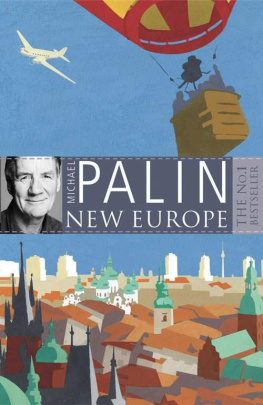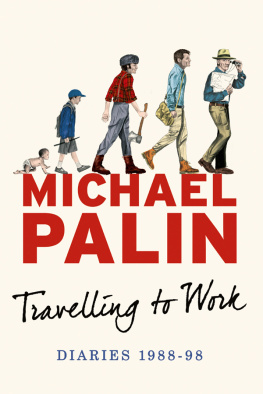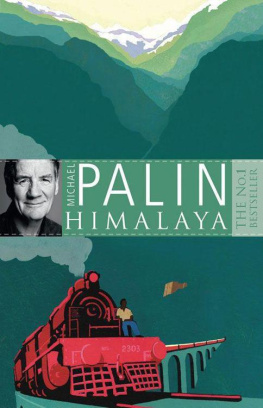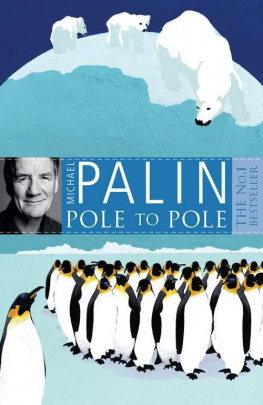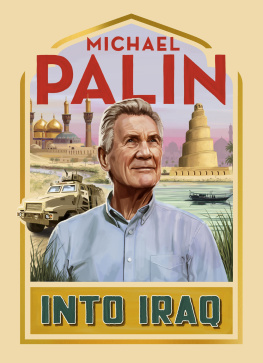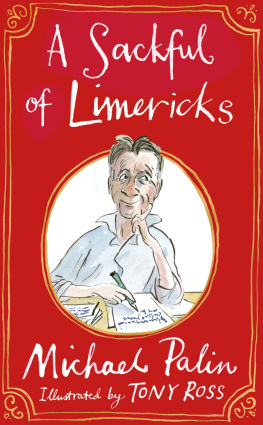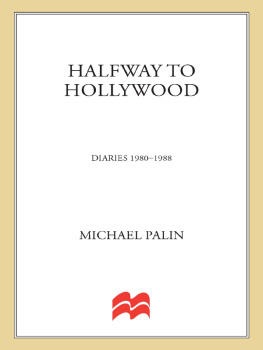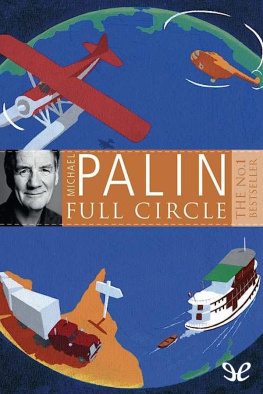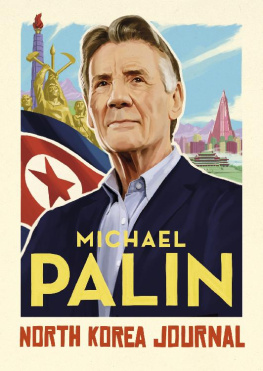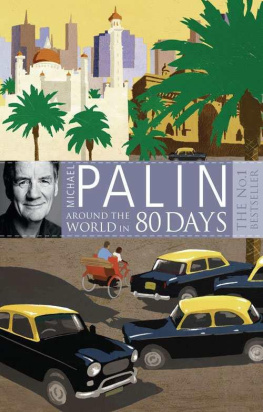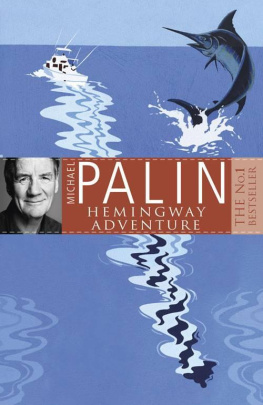Michael Palin - New Europe
Here you can read online Michael Palin - New Europe full text of the book (entire story) in english for free. Download pdf and epub, get meaning, cover and reviews about this ebook. year: 2010, publisher: Orion, genre: Detective and thriller. Description of the work, (preface) as well as reviews are available. Best literature library LitArk.com created for fans of good reading and offers a wide selection of genres:
Romance novel
Science fiction
Adventure
Detective
Science
History
Home and family
Prose
Art
Politics
Computer
Non-fiction
Religion
Business
Children
Humor
Choose a favorite category and find really read worthwhile books. Enjoy immersion in the world of imagination, feel the emotions of the characters or learn something new for yourself, make an fascinating discovery.
- Book:New Europe
- Author:
- Publisher:Orion
- Genre:
- Year:2010
- Rating:3 / 5
- Favourites:Add to favourites
- Your mark:
- 60
- 1
- 2
- 3
- 4
- 5
New Europe: summary, description and annotation
We offer to read an annotation, description, summary or preface (depends on what the author of the book "New Europe" wrote himself). If you haven't found the necessary information about the book — write in the comments, we will try to find it.
New Europe — read online for free the complete book (whole text) full work
Below is the text of the book, divided by pages. System saving the place of the last page read, allows you to conveniently read the book "New Europe" online for free, without having to search again every time where you left off. Put a bookmark, and you can go to the page where you finished reading at any time.
Font size:
Interval:
Bookmark:
MICHAEL PALIN
Photographs by Basil Pao

This ebook first published in 2010 by Orion Books
Copyright (c) Michael Palin 2007Photographs copyright (c) Basil Pao 2007
Hand-drawn lettering by Ken Wilson The moral right of Michael Palin to be identified as the author of this work has been asserted in accordance with the Copyright, Designs and Patents Act 1988. All rights reserved. No part of this publication may be reproduced, stored in a retrieval system or transmitted in any form or by any means, without the prior permission in writing of the publisher, nor to be otherwise circulated in any form of binding or cover other than that in which it is published without a similar condition, including this condition, being imposed on the subsequent purchaser. A CIP catalogue record for this bookis available from the British Library.
ISBN: 978 0 2978 6361 8 The Orion Publishing Group LtdOrion House
5 Upper Saint Martins Lane
London WC2H 9EA
This ebook produced by Jouve, France An Hachette UK Company www.orionbooks.co.ukFor Archie
MICHAEL PALIN is a scriptwriter, comedian, novelist, television presenter, actor and playwright. He established his reputation with Monty Pythons Flying Circus and Ripping Yarns. His work also includes several films with Monty Python, as well as The Missionary, A Private Function, A Fish Called Wanda, American Friends and Fierce Creatures. His television credits include two films for the BBCs Great Railway Journeys, the plays East of Ipswich and Number 27, and Alan Bleasdales GBH.
In 2006 the first volume of his diaries, 1969-1979: The Python Years, spent several weeks on the bestseller lists. He has also written books to accompany his seven very successful travel series: Around the World in 80 Days (an updated edition of which was published in 2008, twenty years later), Pole to Pole, Full Circle, Hemingway Adventure, Sahara, Himalaya and New Europe. Most have been No 1 bestsellers and Himalaya was No 1 for 11 weeks. He is the author of a number of childrens stories, the play The Weekend and the novel Hemingways Chair. Visit his website at www.palinstravels.co.uk .
Basil Pao began his photographic career in 1980 on his return to Hong Kong after ten years in the United States, where he was an art director for Atlantic, Polygram and Warner Bros. He first worked with Michael Palin on the design for the book accompanying Monty Pythons Life of Brian. They have since collaborated on the books based on his seven travel series. In 2007 he wrote and photographed China Revealed: A Portrait of the Rising Dragon.
M ANY TIMES, too many times, Ive woken, 35,000 feet in the air, in that limbo-land between the end of an old day and the start of a new one, after a long flight from somewhere far away. Ive pushed up the window shutter and peered out at the twinkling lights below and wanted to be down there, in a real house with a kitchen table and eggs on the stove and coffee on the hob.
More often than not, its eastern Europe that I see waking up below me and though its only two hours from where I live, I realise with a jolt that I know more about Hong Kong or the Hindu Kush than what its really like down there.
Of all the continents Ive touched in the nineteen heady years since we started out on Around the World in Eighty Days, Europe is the one in which Ive lingered least, partly because it is so close to home, and partly because much of it has been in serious disarray. Our planes were bombing Serbia only eight years ago.
But since the start of the twenty-first century Europe has begun to sort itself out. East and West have drawn closer. There have been no major conflicts. Countries once suspicious of visitors now welcome them with open arms.
So when it came to reuniting Saga Platoon for one more adventure it seemed that there was a gap to be filled. The continent I had flown over on so many dark mornings could not be ignored any longer. It was time for Europe. And time to get out my trusty, increasingly tattered, Penguin Encyclopaedia of Places.
Europe: Apart from Australia, the smallest of the continents. It occupies about seven per cent of the earths land surface. On the other hand it is second to Asia for size of population, containing over 20 per cent of the world total.
And therein lay the first problem. An awful lot of people to meet.
It became clear that it would take us too long to cover the whole of Europe. Most interesting to me was that half of my own continent which, for most of my lifetime, was chilled by a Cold War and concealed behind an Iron Curtain. Now, with the Cold War over and the Iron Curtain lifted, there was the prospect of being able to travel through once-forbidden lands; of making a voyage of discovery on my very own doorstep.
Trying to describe such a journey in purely geographical terms didnt seem quite right. Some countries were clearly part of Eastern Europe, others very definitely Central Europe, while others, like Turkey, Moldova or Ukraine, didnt fit into either category. What they all seemed to have in common was a sense of rapid change, an opening-up of new horizons. It wasnt just names that were changing. Opportunities were being seized, old systems challenged, economic and political alliances entirely rethought. Nothing was quite as it had been before. Peoples, cultures and traditions with long historical roots were being shaken up and re-energised. Compared to the relatively secure and settled shape of Western Europe, the realignment of the eastern half of the continent was hurtling along. What was taking shape, both on the map and in the head was a new Europe. Or as we say on television, a New Europe.
If Id made this journey eighteen years ago, instead of haring off around the world, it would have taken me through ten countries. Today there are twenty. More than all the countries in our Himalaya and Sahara journeys put together.
Many of these new nations are tiny, some with total populations smaller than that of London, but despite their size they have a very clear sense of their own identity, reinforced and defined by their own language, culture, history and currency. What makes their existence viable is the supportive hand of the European Union. Not all are part of it yet, but all feel that its benefits are worth taking seriously. After a century of power struggles which have visited unimaginable horrors upon the continent this coming-together is breathtakingly fresh and promising.
So I set out with considerable excitement in May 2006, and, a year later I find myself neither disillusioned nor cynical. The spirit of New Europe does exist, the hopes and dreams still burn and the future is full of opportunity. Our journey might just have been through a very small window in history and my natural tendency to optimism and half-full glasses may have misled me, but whatever the future holds I think it is important to have marked this moment when, for the first time in a thousand years, the old Europe of domination and conflict has been replaced by a new Europe of co-operation.
Lets, for all our sakes, hope that we can make it work.
Michael Palin, London, June 2007
We filmed over a period of twenty-two weeks between 16 May 2006 and 4 May 2007, generally avoiding the very depths of winter, though snow and ice caught up with us in Turkey. My formative impressions of Eastern Europe had been in monochrome, as if the people there lived in concrete apartment blocks under permanently grey skies. Basil Paos pictures for the book and Nigel Meakins photographs for the BBC series are an eloquent corrective. The sun shone throughout most of our journey. Though there are far too many concrete blocks, we also saw well-kept, elegant, ancient and very beautiful cities and villages, as well as swathes of countryside farmed by the traditional methods fast disappearing from west European landscapes.
Font size:
Interval:
Bookmark:
Similar books «New Europe»
Look at similar books to New Europe. We have selected literature similar in name and meaning in the hope of providing readers with more options to find new, interesting, not yet read works.
Discussion, reviews of the book New Europe and just readers' own opinions. Leave your comments, write what you think about the work, its meaning or the main characters. Specify what exactly you liked and what you didn't like, and why you think so.

